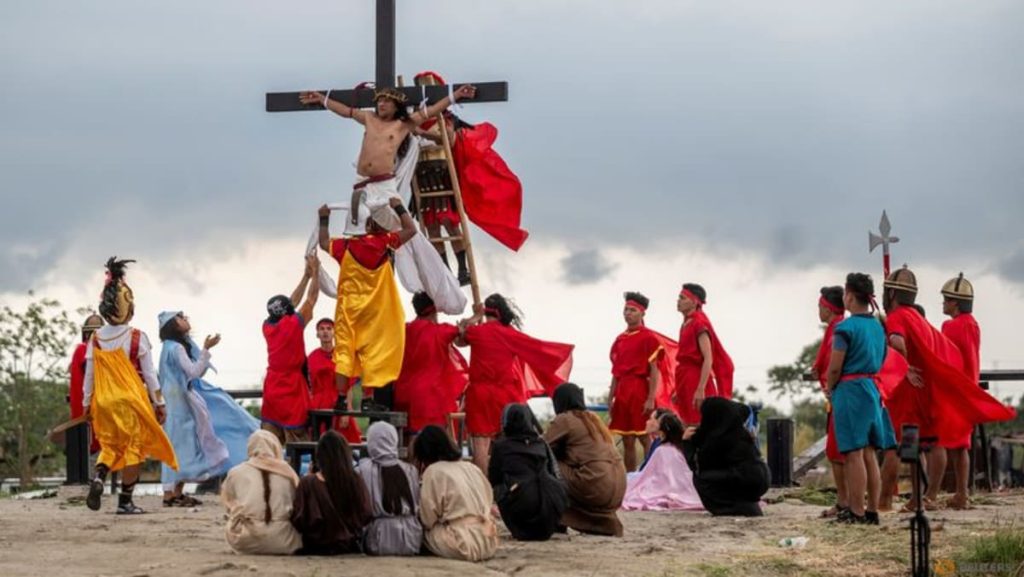tradition. The event began with a procession with participants carrying wooden crosses and flagellating themselves as onlookers and photographers crowded the streets. Local men, some dressed as Roman soldiers, took turns nailing devotees to crosses as they lay on the ground. Despite the scorching temperatures, some devotees remained on the crosses for several minutes to re-enact the suffering of Jesus Christ.
The re-enactment of the crucifixion in Cutud has been a tradition for over three decades, drawing both local participants and tourists from around the world. Despite criticism from some religious leaders and health officials, the devotees believe that the act of being nailed to the cross is a way to repent for sins and show their devotion to God. The Catholic Church in the Philippines has neither condemned nor endorsed the practice, leaving it up to the individual devotees and local traditions to decide its significance.
The annual crucifixion ritual in Cutud is just one example of the intense devotion and religious fervor exhibited by Filipino Catholics during Holy Week. Many devotees participate in various forms of self-flagellation and penitence, including walking barefoot on rough stones and carrying heavy crosses as a way to commemorate the suffering of Jesus. These acts of sacrifice and pain are seen as a way to purify the soul and bring believers closer to God.
The crucifixion ritual in Cutud has attracted controversy and criticism from some quarters, with concerns raised about the physical and emotional toll it takes on the participants. Health officials have warned about the risks of infection and trauma from being nailed to wooden crosses, while religious leaders have questioned the appropriateness of re-enacting such a violent act. Despite these criticisms, the devotees in Cutud continue to participate in the ritual each year, viewing it as a deeply personal and meaningful expression of their faith.
While the practice of crucifixion re-enactments may be viewed as extreme or even barbaric by some, for the devotees in Cutud and other parts of the Philippines, it is a powerful and symbolic way to connect with the suffering of Jesus Christ. The intense physical pain and sacrifice involved in being nailed to a cross are seen as acts of penance and devotion that bring believers closer to God and help cleanse them of sin. The ritual serves as a stark reminder of the central tenets of Christianity, including redemption through suffering and the ultimate sacrifice of Jesus on the cross.
In conclusion, the annual crucifixion ritual in Cutud, Philippines, serves as a poignant and dramatic reminder of the deep religious faith and devotion of Filipino Catholics during Holy Week. Despite criticism and controversy, the devotees who participate in the re-enactment view it as a profound and personal way to connect with the suffering of Jesus Christ and demonstrate their love and devotion to God. The tradition, which has been passed down for generations, continues to draw thousands of spectators and participants each year, showcasing the enduring power of faith and religious traditions in the Philippines.


